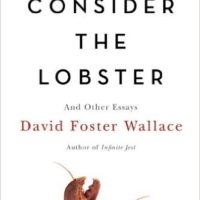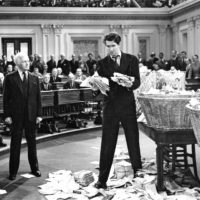This week The New Yorker had some shocking news: Andy Borowitz is only their second least funny humorist. In his "Shouts and Murmurs" piece "The Pences Visit Manhattan", Douglas McGrath takes the blue ribbon. He begins: Governor Mike Pence was having a romantic dinner with the love of his life, Mrs. Mike Pence, at the Red Lobster in Times Square. The Governor knew that as Vice-President he would have to attend foreign banquets, so he and Mrs. Pence were trying to broaden their palates. Luckily, they had already found a couple of dishes at the … [Read more...]
What arts legislation do we want then? A call for suggestions
A few days ago blog neighbour Doug McLennan lamented that Congress seems to have no interest in arts-related legislation, with no bills coming to floor on which we could even guess at how elected officials actually weigh the arts as a matter of national importance. I responded that we should be careful what we wish for, that any legislation dealing with cultural sector would likely be a source of conflict, that would not necessarily result in a positive result for the arts (where by "the arts" I refer to those who are the audience and … [Read more...]
What should Congress do about the arts?
Blog neighbour Doug McLennan reviews the recent Congressional Arts Report Card produced by the Americans for the Arts Action Fund PAC. He notes that there isn't really a lot of material on which to base a report card - indeed, there were no recorded floor votes that were solely concerned with the arts. And so in reckoning how to distribute their modest funds to assist pro-arts candidates, they looked to past votes, and to whether the member of Congress had taken part in any activities that showed at least an interest in the arts. Putting aside … [Read more...]
Diversity in the Arts: Where are we now?
The people at Createquity have put together a great piece on different ways of thinking about what has surely become the hot discussion topic in the art world: diversity. They reveal the depth and complexity of the issue, and provide many links worth pursuing. A good read. But still... Go ahead and talk about diversity all you want. But in the end, the representatives of the elite art world, writing for a national newspaper, will still say: But let's be serious. You are supposed to like this art, not that art. This meaning 'the … [Read more...]
About that Italian €500
The Italian government has announced that it will give all eighteen-year olds, on their birthday, a €500 voucher to spend on books, film, music or theatre. The Independent reports here, and The Atlantic here, which says: The initiative “reminds [youth] how important cultural consumption is, both for enriching yourself as a person and strengthening the fabric of our society,” the Italian parliamentary undersecretary Tommaso Nannicini said in The Local. I think cultural vouchers are an interesting idea: they fund the arts by giving directly to … [Read more...]
Bots and ticket prices and supply and demand: updated 22-10-16
The Verge reports on new efforts from Lin-Manuel Miranda and New York Senator Chuck Schumer to crack down on those who use "bots" to quickly, and in bulk, purchase scarce tickets on primary sites to then resell on secondary markets at a mark-up. The story quotes Mr. Miranda saying, "My concern is that our show [Hamilton] is about the founding of our country and if bots are buying up all the tickets and charging this insane secondary market price, most of the country can't see it." I can see Mr. Miranda wanting something done about bots - he … [Read more...]
Who wants performance metrics in the arts?
A couple of weeks ago, in a post on quantification in the arts, I wrote: Is the need for quantitative evidence being unfairly demanded from the arts sector? Here’s a thought: what if advocates for the arts in the public and nonprofit sectors have themselves chosen to emphasize quantitative evidence, in part because the rhetorical case for arts support is so very challenging? Presenting numbers, after all, has the virtue of being just so easy, even if in fact they are numbers that don’t mean anything (I’m looking at you, ‘economic impact’ … [Read more...]
On proper attire for attending the theatre
We have links to two stories today, Elisabeth Vincentelli asking that people try a little harder to look decent when they attend the theatre, much as they might be comfortable in their cargo pants and their Black Sabbath 1982 Mob Rules tour official t-shirt, and Alexis Kleinman in rebuttal - with the arts already having problems of being exclusive, why exacerbate by imposing a dress code? I side with Ms Vincentelli, for three reasons. First, putting on long pants and a shirt that involves buttons, for men (I'll confine myself to men to … [Read more...]
The size of the arts sector is not a rationale for public funding of the arts sector
In yesterday's post, I wrote (as an aside): I see a lot of advocacy that follows the '1. the cultural sector is bigger than you thought it was, 2. ???, 3. deserves more public funding' model. Conveniently, this morning we get this story from The Scotsman on the Edinburgh Festival: Flagship events like the Edinburgh International Festival, the Fringe, the Tattoo and the Hogmanay festivities are now attracting a record 4.5 million people each year – up by more than 250,000 in that period. They are also now supporting 6,021 jobs – up by … [Read more...]
Does arts policy require quantification?
The NEA has posted a very interesting interview between their Sunil Iyengar and the critic Leon Wieseltier. It raises interesting questions about the role of measurement in arts policy, and so here is something of an annotation of part of the interview (and do read the whole thing). IYENGAR: To measure the value of arts and culture in society: is this a fool’s errand, then, or do you think there are probably legitimate ways within the social sciences? WIESELTIER: I think the question of what the value of art is in society is not a … [Read more...]










